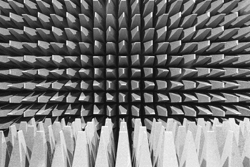 by Dave Foxx
by Dave Foxx
I really make an effort to NOT be a grammar Nazi. You have no doubt seen posts from someone you know who is otherwise bright and clever, with an obvious grammatical faux pas, like using the wrong spelling of there, their or they’re. It’s jarring to me and my first instinct is to reach out and correct that person by sending a DM, text or email. I did it… exactly once. He replied immediately with the question, “Did you understand what I meant?” After I replied in the affirmative, he wrote back, “STFU.” I’ve apologized a couple of times since, but he pretty much ignores me now. It serves me right. Nobody likes to be told they screwed up, least of all me.
A few years ago, I mistakenly got into it online with an expert on echolocation. She had a brilliant article that said bats are not blind and that echolocation is just their method of finding prey and avoiding obstacles on a pitch black night. I had a problem with the fact that she was using the terms echo and reverb interchangeably. In my response, I insisted that they were two different phenomena. Echo is the reflection of sound that comes back as a distinct audio event, while reverberation blends with the original event. It turns out, I was only a little bit right. Had I been thinking, I would have realized that echo and reverberation, are exactly the same thing: sound reflections! The difference between the two is in the amount of time it takes for the reflected sound to come back to the source of the sound and how quickly it decays. Anything under 50 milliseconds delay is regarded as reverb. Echo is a minimum of 50 ms delayed and can run upwards of 4 seconds. She was very gracious when I apologized. We have since become online friends and she even consulted with me once before she wrote an article on anechoic environments. Actually, ‘consulted’ might be a bit of an overstatement. She asked me to help her find an anechoic chamber that she could use in an experiment.
 If you’ve ever been in an anechoic chamber, you know that within a very few seconds your ears start to hurt a bit, straining to hear ANY kind of sound other than your own voice. If you are in it with another person, just turning away from them makes it almost impossible for them to hear whatever you say. You stand on a sturdy metal mesh and are surrounded on all 6 sides (up and down too) with sound absorption material shaped into long spikes which traps ALL sound and doesn’t allow for any reverb. Sound familiar? I’ve never seen a VO booth that was as quiet as an anechoic chamber, but that is pretty much always the goal of the design: to insure that the ONLY sound being captured by your microphone is pure voice. But, when you stop and think about it, that doesn’t sound the least bit natural. In fact, if you’re presenting a “slice-of-life” scene in your spot, it sounds completely unnatural.
If you’ve ever been in an anechoic chamber, you know that within a very few seconds your ears start to hurt a bit, straining to hear ANY kind of sound other than your own voice. If you are in it with another person, just turning away from them makes it almost impossible for them to hear whatever you say. You stand on a sturdy metal mesh and are surrounded on all 6 sides (up and down too) with sound absorption material shaped into long spikes which traps ALL sound and doesn’t allow for any reverb. Sound familiar? I’ve never seen a VO booth that was as quiet as an anechoic chamber, but that is pretty much always the goal of the design: to insure that the ONLY sound being captured by your microphone is pure voice. But, when you stop and think about it, that doesn’t sound the least bit natural. In fact, if you’re presenting a “slice-of-life” scene in your spot, it sounds completely unnatural.
The thing about “slice-of-life” scenes is they don’t work at all unless the environment is right. You can have all the sound effects of a family kitchen scene in exactly the right places, but without the many reflections you typically hear in a family kitchen, it sounds like the voices were just laid over the sound effects, which is exactly what it is. Add some early reflections and a bit of spatial placement to the voices and the whole scene comes to life. If your actors are even remotely decent, it starts generating pictures in the listener’s minds, pictures that add a TON of impact.
If you’re trying to create a concert environment, you have to decide ahead of time on the dimensions of the room it’s supposed to be in. Sound travels at about 340 meters per second, or more than 3 football fields (end zones included) for a one-second delay. Even the biggest indoor arenas are seldom larger than 150 meters, so any ‘echo’ you add needs to be pretty short… perhaps 200 milliseconds. Most of the reflected noise will come as reverb with very few early reflections because the majority of the sound gets to the audience directly if the room is well designed. An open stadium will have some echoes, but again they’ll be pretty quick as most stadiums only contain one football field. (Pitch for you soccer and rugby fans… er, the other kind of pitch.)
Decay is pitch dependent. Lower frequencies decay faster than higher, but for our purposes, we give them all pretty much the same treatment. For production, decay time is measured from the impact of the sound to the point at which the level drops 60 decibels due to sound absorption.
Right about now, your eyes are probably starting to glaze over. This science stuff is a lot of numbers and calculations… not exactly the most riveting thing to read. If you want to get a really in-depth understanding of reverb, you can look into the studies done in the late 19th-century at Harvard by Wallace Clement Sabine. He actually began by using a stopwatch and his ears to figure out how long reverberation takes to decay. His work was so important to later sound engineers, they named the units of sound absorption sabins. The formulas are very complex, taking into account the speed of sound, the volume of the room (in cubic meters), the amount of surface area (the walls, ceiling and floor), the reflectivity of the surfaces in the room as well as the temperature of the air in the room (which affects the speed of sound). Oh, and all of that assumes the room is at sea level too.
Lucky for us, we have plug-ins developed by folks who not only know all that stuff, but have designed their software to allow you to fiddle around with most of the variables. Lexiverb, Trueverb, Renaissance Reverb and D-verb are just a few of the plug-ins available that fortunately each have dozens of pre-sets. From Cathedral (über-long decays) to public restroom (with really bright early reflections), to drum room (fast decay with some early reflection)… each make excellent starting points for the producer. With a little thoughtful tweaking, each preset can be adjusted to the perfect sounding room for whatever scene you’re setting up.
Most of the time, you can simply use a preset and move on to the next design issue and it will sound great. If you’re more of a stickler for detail, I have some suggestions:
- Use only ONE instantiation of your plug-in. That way, the reverb is constant and consistent all the way through. The best way to do this is through SENDS/RETURNS with the return all coming back to one fader for a “reverb sub-master.” This allows you to design the reverb once for the ‘room’ and know that it’s the same in all instances.
- Use a stereo reverb setting so that any sounds that are not center channel will have the reflections the way sounds normally would.
- If the sound is primarily spoken words, be very picky about the decay time. If it’s too long and the reverb is still pretty strong from one syllable to the next, the second syllable becomes clouded. Also, shorter words with low endings like cap, cab and cat, all sound the same… not a happy outcome.
- If you’re creating a room like a kitchen, remember there are a lot of very reflective surfaces like tile, metal and glass. A bathroom will have more though, because it’s a smaller room and EVERY wall is generally covered with tile.
- If you’re creating a concert setting, don’t forget that the audience itself, along with the clothes they’re wearing, will change the absorption rate. Too picky? OK… guilty as charged.
Don’t be shy about monkeying around with the settings. This is one kind of plug-in that generally works best when you tune it with your ears, rather than a calculating brain. One last tip, once you’ve got it really close to what you’re looking for, walk away for a few minutes. Grab a cup of coffee or get today’s big water-cooler joke and then return and hit play. Chances are much better than even that you’ll be happy with the result.
For my sound this month on the Soundstage, a promo I just did yesterday for Most Requested Live. It’s for a concert flyaway and instead of making all the music sound like it’s in the arena, I waited until the prize was fully outlined. I gunned up the bass a bit, tuned in my favorite concert setting on the reverb and let it fly! I hope you enjoy it!
■
Dave welcomes your correspondence at

